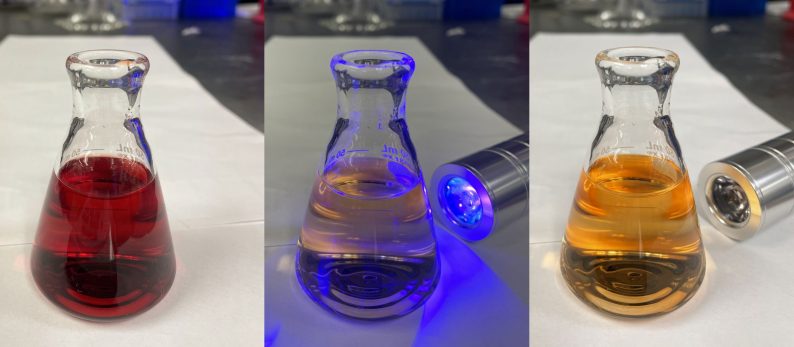
University of Washington spinoff Banyu Carbon, which is developing an inexpensive and low-energy method for carbon removal, recently raised $6.5 million in seed round funding, putting the company on track to scale up its technology for pilot testing this year.
Banyu’s new investors include the Grantham Foundation, United Airlines Ventures, ReGen Ventures, Carbon Removal Partners and Propeller. Banyu was also awarded National Science Foundation small business innovation research funding, was selected for the Department of Energy’s first voucher program to accelerate market adoption of clean energy technology.
And last fall, Banyu secured its first customer — Frontier, which is a fund owned by payment processing company Stripe that aims to speed the development of carbon removal technologies.
“The opportunity to work on a potential solution to help slow, and ultimately reverse, the buildup of planet-warming gasses in the atmosphere is an incredible motivator for us,” said Julian Sachs, Banyu co-founder and chief technology officer. “It is exciting to see investors, funding agencies, carbon credit purchasers and media outlets recognize the potential of our approach to carbon removal, and more generally, to promote innovation in this nascent field.”

Banyu Carbon was formed two years ago by Sachs and Alex Gagnon, both UW professors and chemical oceanographers in the UW School of Oceanography. Their academic research has focused largely on understanding connections between ocean chemistry, the carbon cycle and climate. As both professors saw the reality of the unprecedented rate at which we’re putting carbon into the atmosphere, they increasingly felt the need to act.
“Like many of our students, we’re challenging ourselves to do something more about it than just put [these facts] into context,” Gagnon said recently during an interview with the podcast Carbon Removal Newsroom. “The concept we’re commercializing is an opportunity to have an impact and make a contribution.” [Listen to the full podcast interview here.]
Banyu Carbon’s technique relies on sunlight and seawater to remove carbon dioxide from water. Large bodies of water such as oceans store carbon, which can wreak havoc on marine ecosystems as the water’s chemistry changes through a process known as ocean acidification.
Most direct removal of carbon dioxide requires a tremendous amount of energy, but Banyu’s process is remarkably energy efficient. Banyu’s reusable molecule relies on sunlight to temporarily acidify seawater, making it possible to convert dissolved carbon in the water to carbon dioxide so it can be removed. Once rid of the carbon dioxide, the seawater can return to the ocean, otherwise unchanged.

“Every viable plan to keep global temperatures below dangerous levels requires carbon removal at a massive scale, but current techniques are too energy intensive and costly to meet this need. The world desperately needs new ways to remove carbon dioxide at scale,” Sachs said.
We currently remove about 10,000 tons of carbon per year globally. We need to be removing 1 billion tons each year by the end of the decade to address the climate crisis, Sachs explained.
“Our simple approach promises to dramatically reduce the cost and energy requirements of carbon removal,” he added.
The company is headquartered in the CoMotion Labs incubator at Fluke Hall on the UW campus. It also partnered with UW CoMotion, which supports UW researchers who want to bring their innovations from lab to market. Sachs and Gagnon are planning a pilot test of their technology in Puget Sound later this year.
Related news stories: Bloomberg News and Axios

